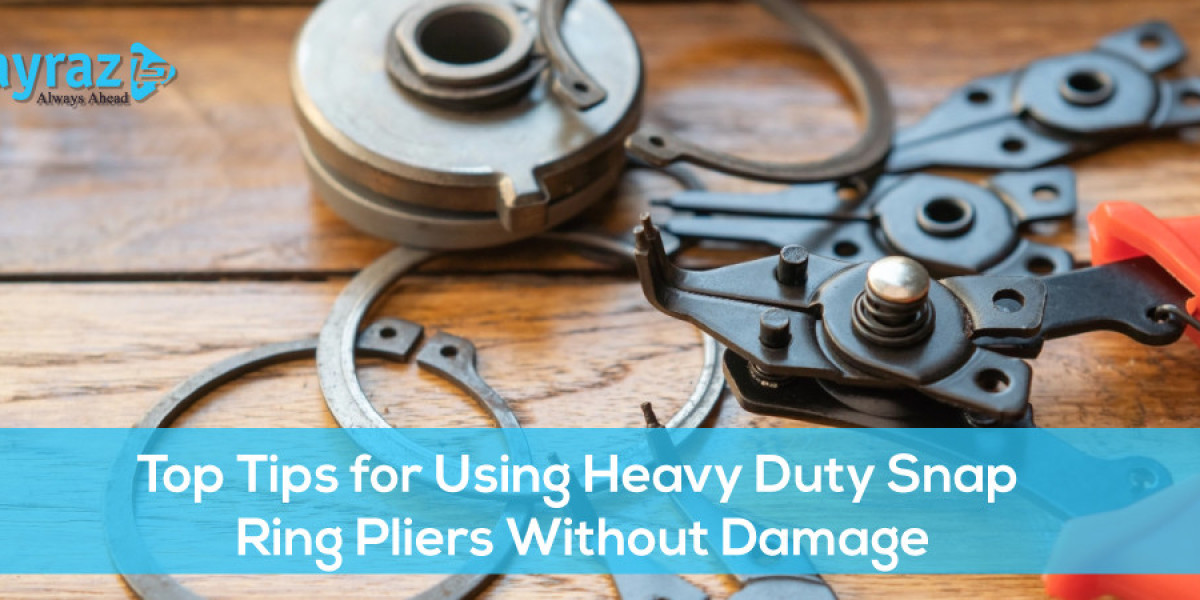Heavy duty snap ring pliers are essential tools for mechanics, machinists, heavy duty snap ring pliers on automotive parts, machinery, and equipment that rely on snap rings (also known as circlips) to secure components in place. While these pliers are designed to handle robust snap rings in high-tension applications, improper use can damage the snap ring, the component, or even the pliers themselves. To help you get the job done safely and effectively, here’s a detailed guide on the top tips for using heavy duty snap ring pliers without damage.
1. Choose the Right Snap Ring Pliers for the Task
Not all snap ring pliers are created equal. The first step to avoiding damage is to select the correct type for the job:
External snap ring pliers – Used to expand rings that fit around shafts.
Internal snap ring pliers – Used to compress rings that fit inside bores.
Additionally, heavy duty pliers come with various tip sizes and angles (straight, 45°, 90°) to match the ring size and the work environment. Using the wrong type or size of pliers increases the risk of slippage, distortion, or breakage.
2. Inspect Your Tool and the Snap Ring
Before you begin, take a moment to:
✅ Examine the pliers for worn or bent tips, loose joints, or rust.
✅ Check the snap ring for cracks, excessive wear, or deformation.
Damaged tools or snap rings can cause poor performance, slipping, or sudden failure under tension, risking injury or damage to the part.
3. Align the Pliers Properly
For a secure grip:
Make sure the pliers' tips fully engage the holes or lugs of the snap ring.
Keep the pliers perpendicular to the ring’s plane — misalignment increases the chance of the tips slipping out or applying uneven force.
4. Apply Smooth, Even Pressure
Avoid squeezing the handles too quickly or forcefully. Instead:
Gradually apply pressure, ensuring that the snap ring opens or closes just enough for removal or installation.
Do not over-expand or over-compress the snap ring, as this can permanently weaken or deform it.
5. Use the Correct Tip Style for Accessibility
Heavy duty snap ring pliers often offer interchangeable or fixed tips:
Straight tips are ideal for snap rings that are easy to access.
Angled tips (45° or 90°) are better for tight spaces or recessed grooves where straight pliers can’t reach comfortably.
6. Protect Yourself with Safety Gear
Snap rings are under tension and can spring out unexpectedly.
✅ Always wear safety glasses or goggles to protect your eyes in case a ring slips or snaps during use.
7. Clean and Lubricate When Necessary
If a snap ring is corroded or stuck:
Clean the area with a suitable solvent to remove dirt or debris.
Apply a light lubricant (such as machine oil) to the groove or shaft if needed — but avoid excessive lubrication, as it can cause slippage during installation.
A clean, well-prepared work surface reduces resistance and helps the pliers function more effectively.
8. Avoid Using Pliers for the Wrong Tasks
Heavy duty snap ring pliers are designed specifically for snap rings — don’t use them as general-purpose pliers (for gripping, bending, or prying other materials). Misuse can damage the tips, pivot joint, or alignment of the tool, shortening its lifespan.
9. Store and Maintain Your Pliers
After use:
Wipe down the pliers to remove dirt, grease, or moisture.
Apply a drop of oil to the pivot point if necessary.
Store them in a dry tool chest or pouch to prevent rust and damage.
Meta description:Discover the best practices for using heavy duty snap ring pliers safely and efficiently. This guide offers practical tips to help you choose the right pliers, apply controlled pressure, align tools properly, and prevent damage to snap rings and components. Perfect for mechanics, technicians, and DIYers looking to master snap ring installation and removal without costly mistakes.





